NCERT Solutions for Class 10 History Chapter 1 – The Rise of Nationalism in Europe
NCERT Solutions for Class 10 History Chapter 1 – The Rise of Nationalism in Europe are essential for understanding how ideas of nationalism developed across Europe in the CBSE curriculum. These well-structured answers help students grasp topics like the French Revolution’s influence, unification movements in Italy and Germany, and the role of culture in nation-building. Designed as per the latest syllabus, these solutions strengthen conceptual clarity and improve exam preparation. Ideal for revision and practice, they encourage historical thinking and comparative analysis, making them a valuable study tool for scoring well in Class 10 Social Science exams.
NCERT Solutions For Class 10 History – The Rise of Nationalism in Europe – Exercise Images
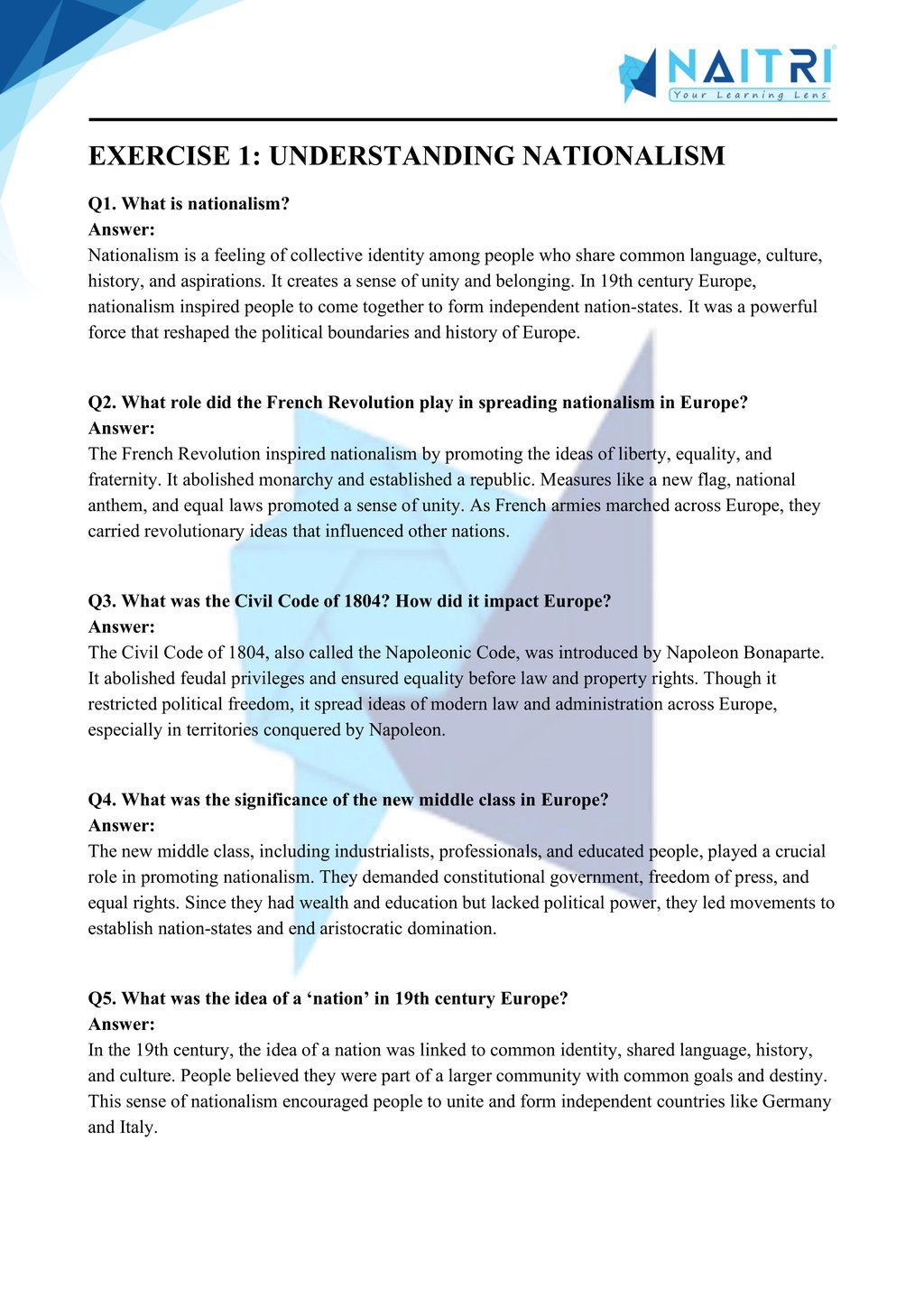
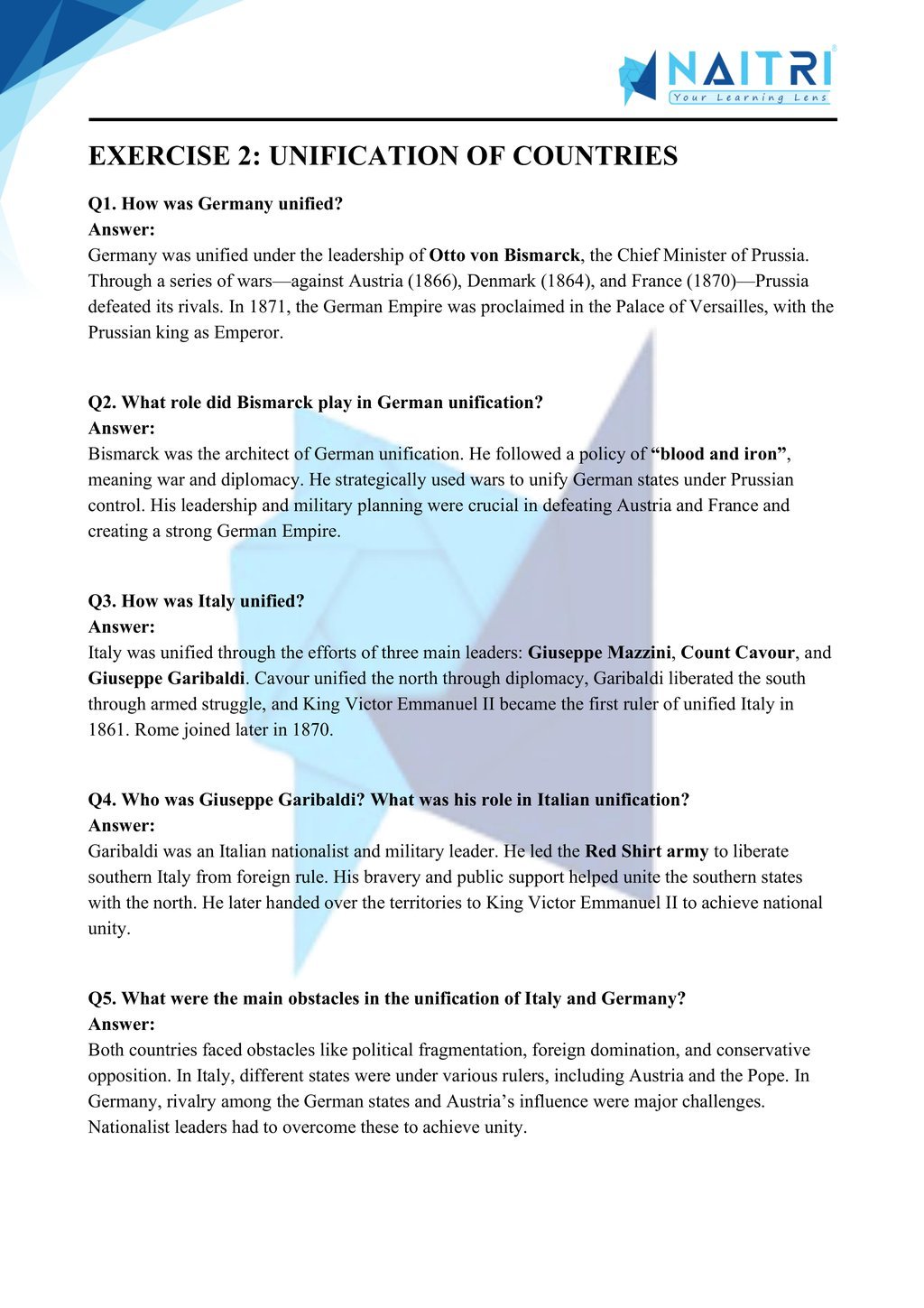
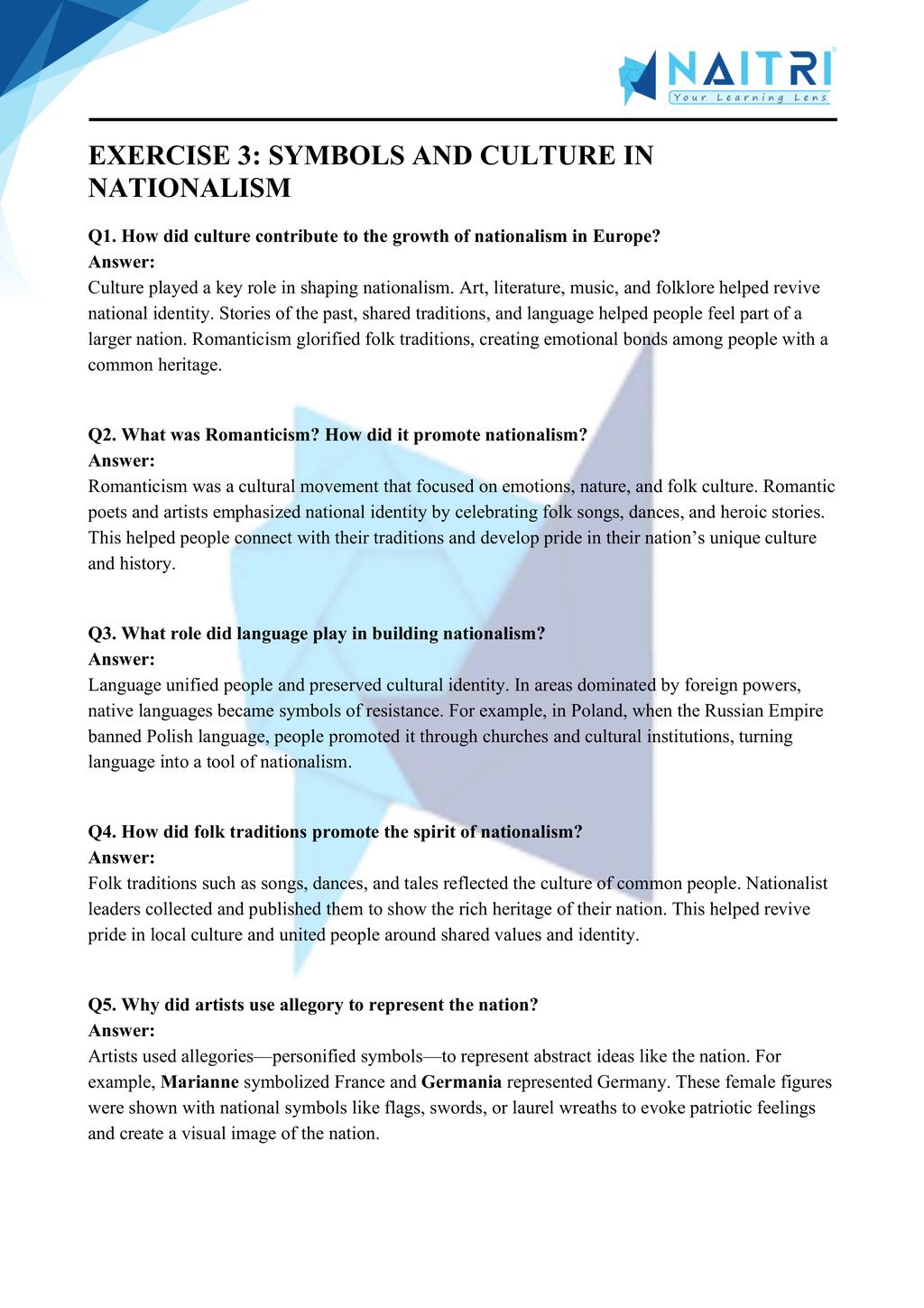
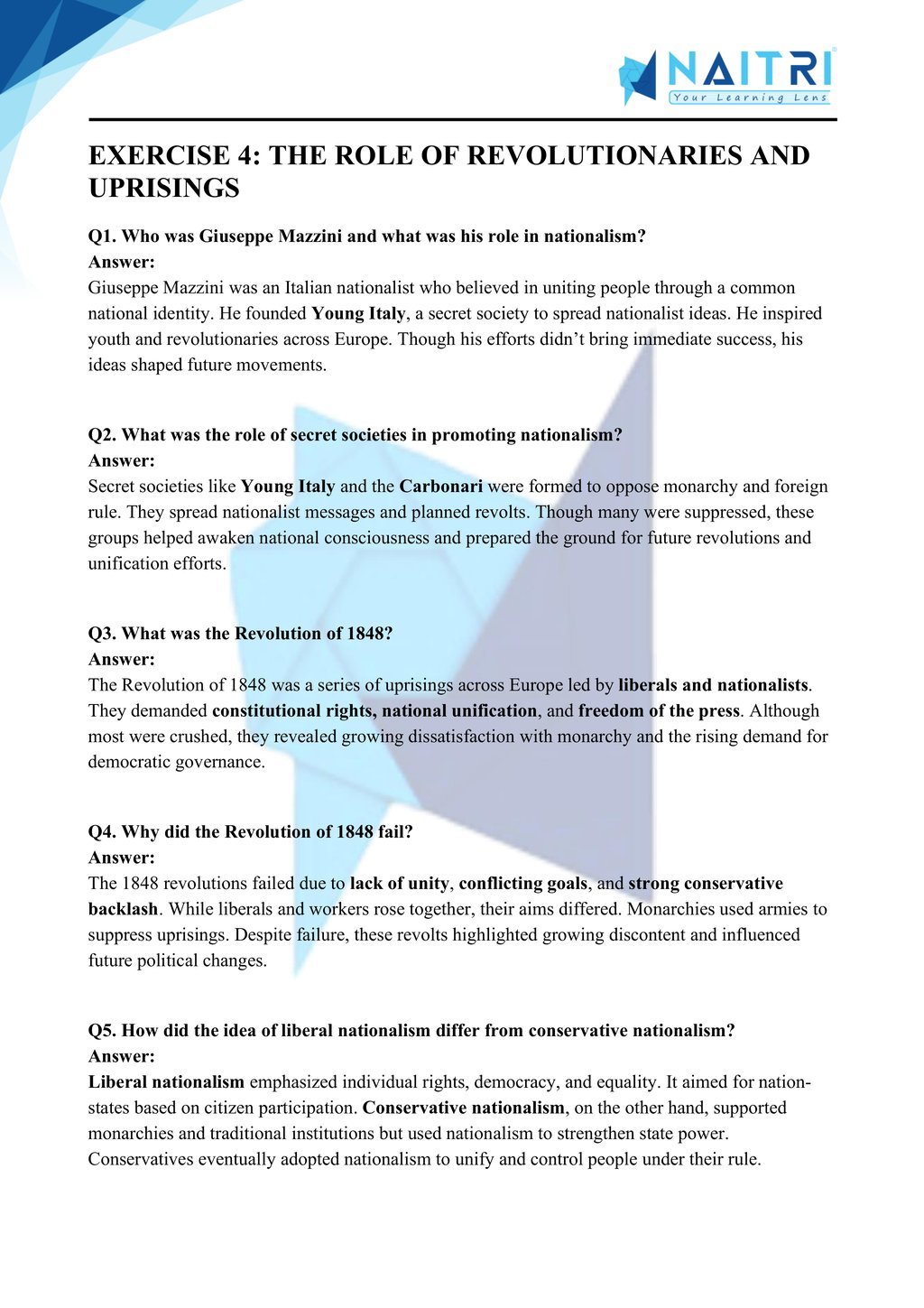
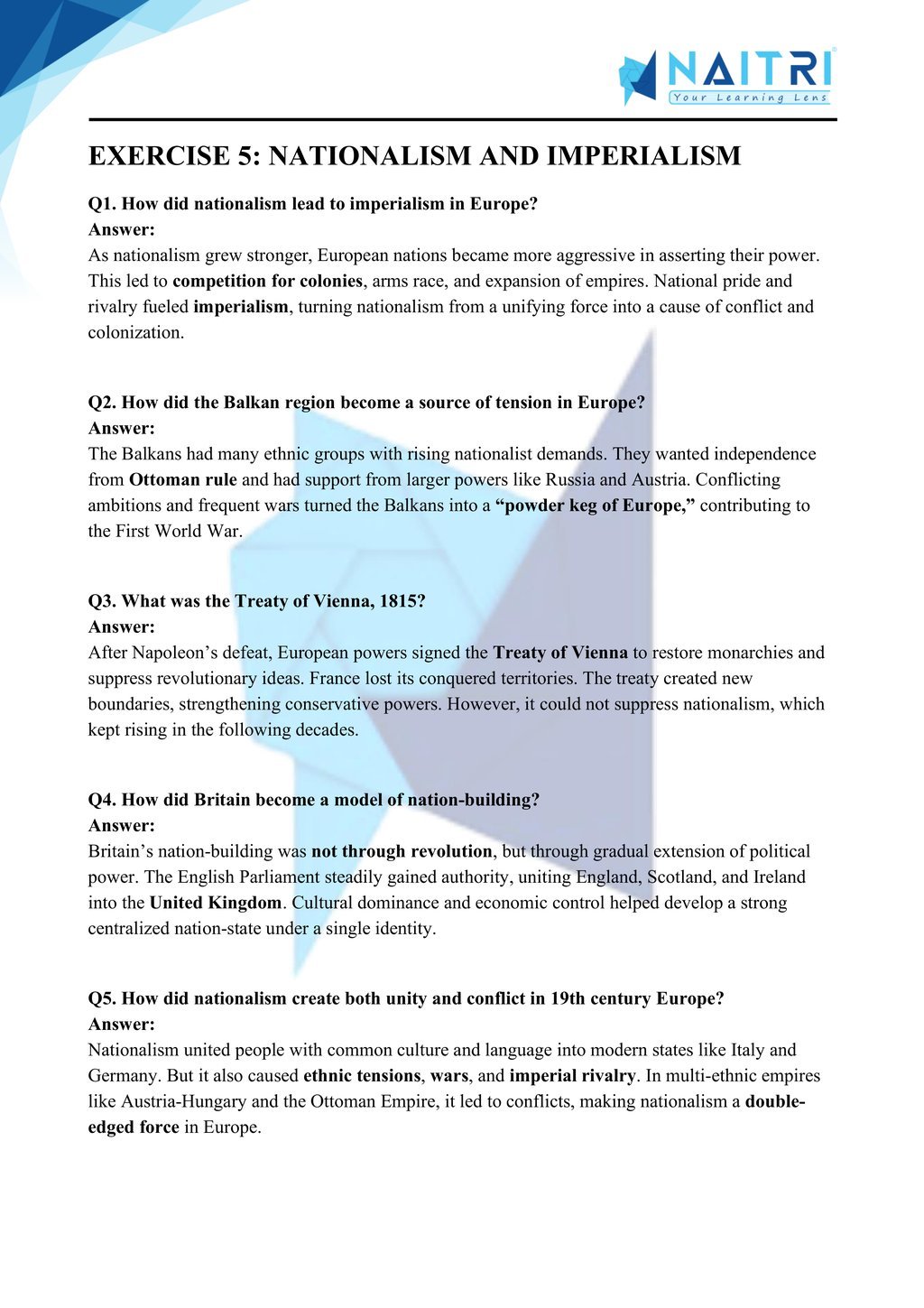
Experience Science Like Never Before – With AR!
Understanding The Rise of Nationalism in Europe is now more exciting and immersive! With the NAITRI App, you can explore complex history concepts through Augmented Reality (AR). Watch revolutions erupt, nations unify, and symbols of nationalism come to life — right in front of you. Our AR-powered lessons make learning interactive, 3D, and fun, helping you retain concepts better and enjoy every topic.



Visualize . Interact . Understand . The future of learning is here
The Rise of Nationalism in Europe – Important Questions with Answers
What factors contributed to the rise of nationalism in Europe?
Answer: Nationalism emerged due to romanticism, language and culture awareness, revolutions (like French Revolution), and people’s desire for self-governance and freedom.Who was Giuseppe Mazzini and what was his role?
Answer: Giuseppe Mazzini was an Italian nationalist leader. He founded Young Italy, preached unity and democracy, and inspired the Italian independence movement.What was Young Italy?
Answer: Young Italy was an organization founded by Mazzini in 1831. It aimed to unite Italian states through popular uprising and national consciousness.What did Otto von Bismarck believe in?
Answer: Otto von Bismarck believed in Realpolitik, which meant achieving unification through power, diplomacy, and war, rather than idealism.What events led to German unification?
Answer: Unification occurred through wars: the Danish War (1864), Austro-Prussian War (1866), and Franco-Prussian War (1870–71), leading to the proclamation of the German Empire in 1871.What was the role of the Zollverein in German unification?
Answer: The Zollverein, a customs union, removed tariffs among German states, promoting economic unity and supporting the political goal of unification.How did the French Revolution influence nationalism?
Answer: The French Revolution spread ideas of citizenship, sovereignty, and national identity, inspiring people across Europe to challenge monarchies and create nation-states.What was the significance of the July Revolution (1830)?
Answer: The July Revolution in France toppled the Bourbon monarchy, sparked uprisings in Belgium and Poland, and reinforced nationalist ideas.How did education and print culture promote nationalism?
Answer: Schools, newspapers, and books taught people about history, mother tongue, and national heroes, helping form a shared national identity.What was the significance of the Vienna Congress (1815) for nationalism?
Answer: The Congress of Vienna tried to restore old monarchies, but its conservative order triggered nationalist movements seeking freedom and unity across Europe.Who was Camillo di Cavour?
Answer: Cavour was the Prime Minister of Piedmont-Sardinia. He used diplomacy and alliances, particularly with France, to unify Italy.What was the role of Giuseppe Garibaldi?
Answer: Garibaldi led the Red Shirts, capturing Sicily and Naples by military campaigns, helping fuse southern Italy into a unified Italy.What were the challenges to unification in Italy?
Answer: Challenges included regional differences, strong foreign powers in Italian states, and conflicts among leaders like Mazzini, Cavour, and Garibaldi.What was the importance of the Franco-Prussian War (1870–71)?
Answer: Victory in the war united German states, created strong German national identity, and crowned Wilhelm I as Emperor of Germany in 1871.How did nationalism affect the Habsburg Empire?
Answer: In the Habsburg Empire, various ethnic groups, like Hungarians and Czechs, demanded autonomy, weakening imperial authority.How did music and sport contribute to nationalism?
Answer: Nationalist movements used folk songs, literature, and sports to promote shared identity and pride, boosting national unity.What was the idea behind ‘nation’ in the 19th century?
Answer: A nation was defined as a community with shared language, culture, and territory, prepared to govern itself politically.How did women participate in nationalist movements?
Answer: Women contributed as writers, educators, and activists, mobilizing support and promoting nationalist ideas, although their roles were often overlooked.How did economic changes support nationalism?
Answer: Industrial growth, railways, and trade created economic integration, fostering social networks and furthering national unification efforts.What were the disadvantages of nationalism?
Answer: Nationalism sometimes led to exclusion, racism, and conflicts, as nations defined themselves by who belonged, leading to wars and turmoil.What is a nation-state?
Answer: A nation-state is a political entity where a single nation occupies and governs a defined territory, with sovereign authority.What is the importance of national flags and symbols?
Answer: Flags and symbols helped visualize national identity, unify people in liturgy, processions, and build a sense of belonging.How did peasants get drawn into nationalist struggles?
Answer: Peasants joined national movements through local associations, religious groups, and press that educated them about patriotism and rights.What role did intellectuals and artists play?
Answer: Intellectuals, poets, and artists wrote about history, language, and identity, shaping nationalist feelings and spreading ideas through print culture.Why is nationalism in Europe important to study?
Answer: European nationalism redefined modern political boundaries, strengthened democratic ideas, and deeply influenced world history through both unity and conflict.
The Rise of Nationalism in Europe explores how the idea of nationalism developed in 19th-century Europe. It begins with the French Revolution and examines the role of liberalism, conservatism, and revolutionary movements in shaping modern nation-states. The unification of Italy and Germany is discussed in detail, along with the role of cultural identity and symbols. This chapter helps students understand how political and social movements fueled the growth of nationhood in Europe.
Download Naitri App
Easy, Visual Learning — Right on Your Phone
Learn with Augmented Reality! The Naitri app makes CBSE and MP Board concepts interactive and fun — even in low-resource settings. Watch lessons, complete homework, take tests, and track progress — all in one place. Anytime. Anywhere.
Available on








